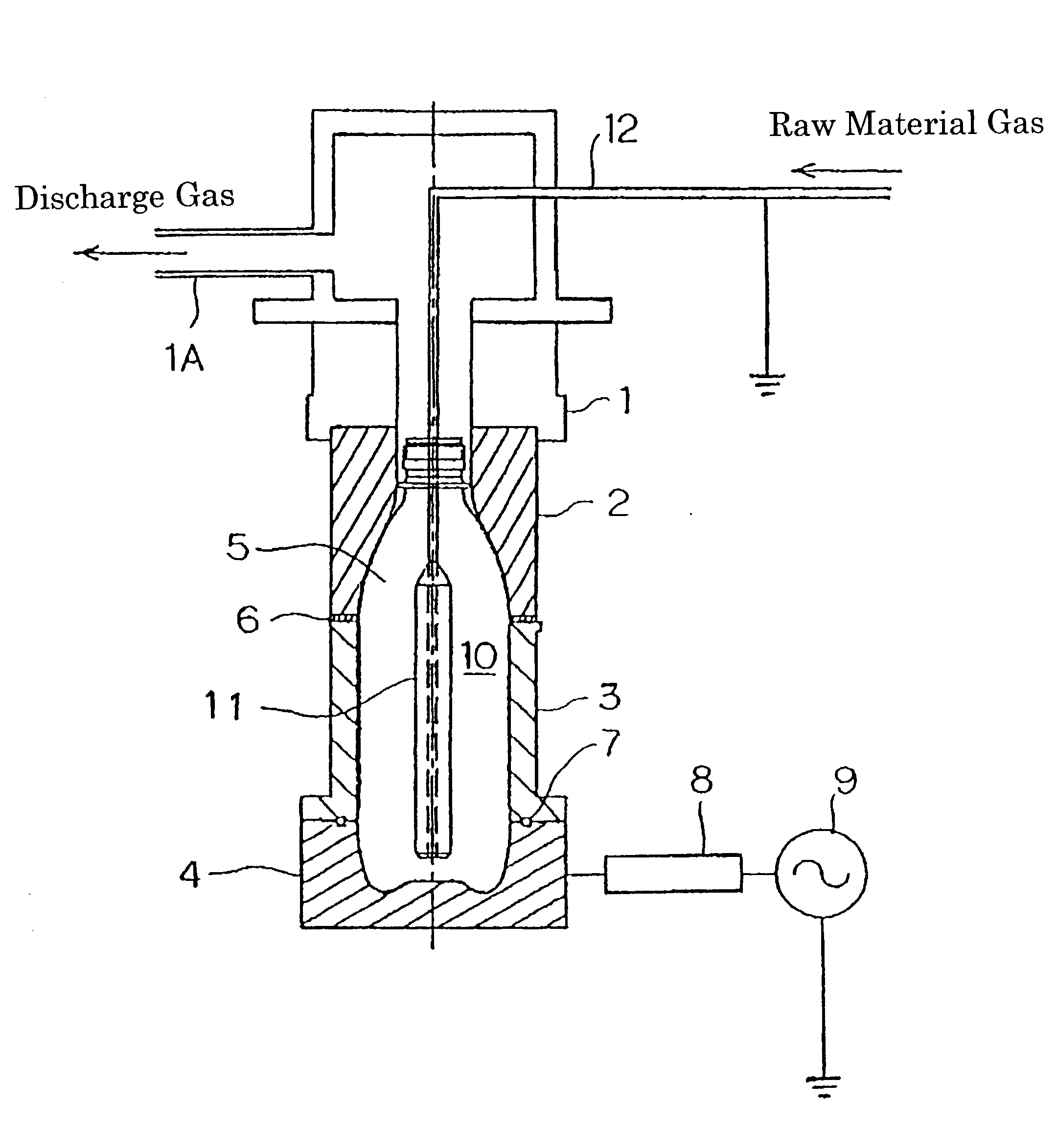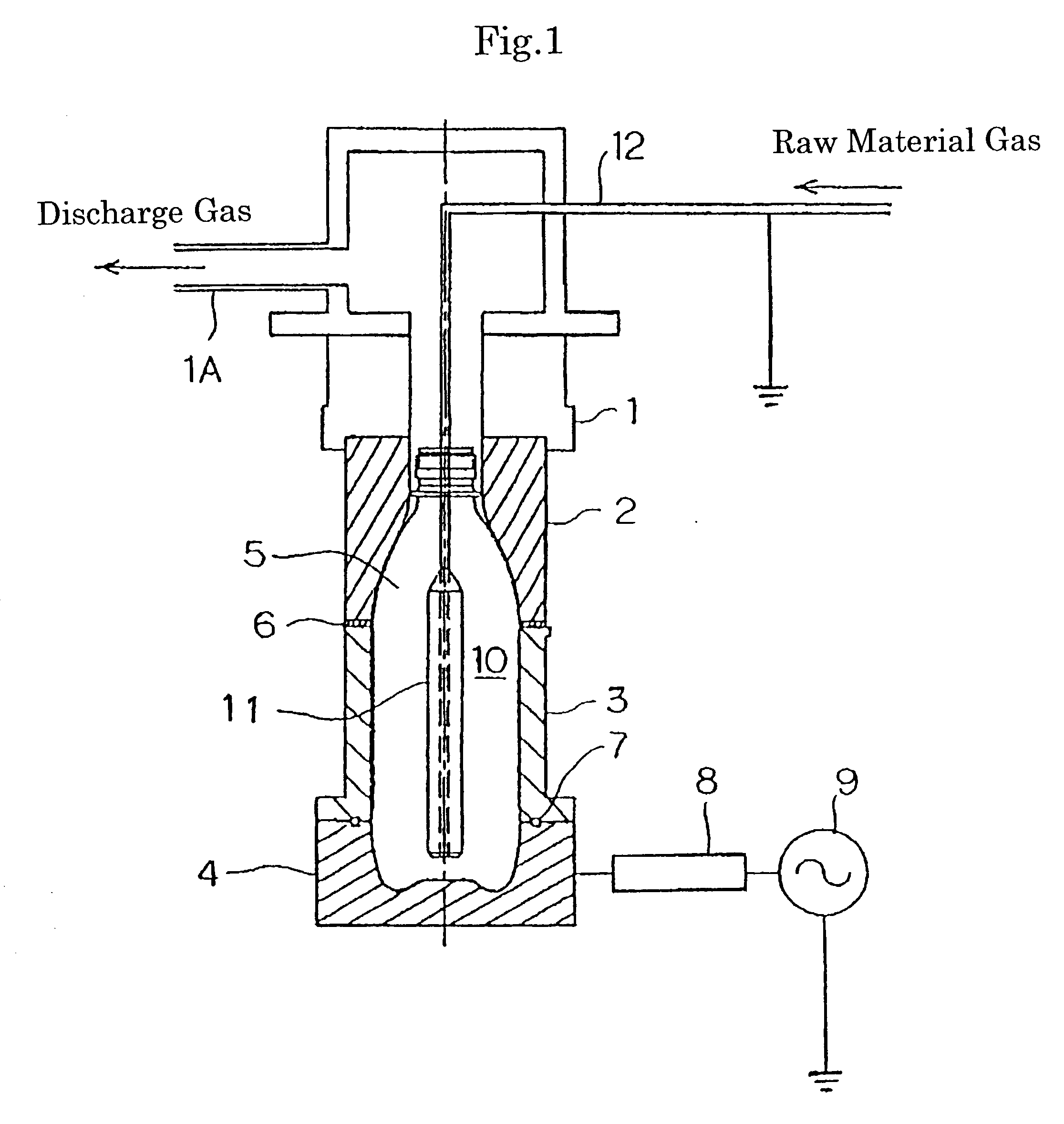Pet container for foods and drinks containing recycled resin and having dlc coating film formed on surface thereof
a pet container and recycled resin technology, applied in applications, transportation and packaging, other domestic articles, etc., can solve the problems of high required cost for the process of low molecular conversion of resin, high cost of low molecular conversion, and high risk of contamination
- Summary
- Abstract
- Description
- Claims
- Application Information
AI Technical Summary
Benefits of technology
Problems solved by technology
Method used
Image
Examples
example embodiments
Example Embodiment 1
[0047] A description will be given for the results of testing the effectiveness of contaminant elution inhibition of PET containers for foods and beverages containing recycled resin.
[0048] Because used PET in the city is found in various contaminated states, model contaminants were mixed with unused PET flakes to form PET flakes contaminated with model contaminants, and pseudo used PET pellets were created, and then these pseudo used PET pellets and unused PET pellets were used to form a container which was then evaluated.
[0049] In general, the contaminants of plastic can be thought to form the following four types of substances: {circle over (1)} substances which are volatile and polar; {circle over (2)} substances which are volatile and nonpolar; {circle over (3)} substances which are nonvolatile and nonpolar; and {circle over (4)} substances which are nonvolatile and polar. In this test, {circle over (1)} toluene (C.sub.6H.sub.5.CH.sub.3, hydrocarbon, volatile...
example embodiment 2
[0069] Next, with reference to the case of II of Table 4, a description will be given for the relationship between the oxygen permeability of the DLC containers and the amount of elution of the contaminants. First, using the high concentration pellets after solid phase polymerization, a contaminated PET container (Experiment Number 1, no DLC film coating) having a 500 ml volume was created, and by changing the above-described vapor deposition conditions for the inner wall surface of the contaminated PET to form a DLC film on the inner wall surfaces of contaminated PET containers, a plurality of DLC containers (Experiment Numbers 2.about.9) having different oxygen permeabilities were created.
[0070] As shown in Table 5, the oxygen permeability of the contaminated PET (Experiment Number 1) in a state where a DLC film was not formed was 0.033 ml / day / container. Further, the oxygen permeabilities of the DLC containers (Experiment Numbers 2.about.9) created by changing the vapor deposition...
PUM
| Property | Measurement | Unit |
|---|---|---|
| melting point | aaaaa | aaaaa |
| volume | aaaaa | aaaaa |
| weight | aaaaa | aaaaa |
Abstract
Description
Claims
Application Information
 Login to View More
Login to View More - R&D
- Intellectual Property
- Life Sciences
- Materials
- Tech Scout
- Unparalleled Data Quality
- Higher Quality Content
- 60% Fewer Hallucinations
Browse by: Latest US Patents, China's latest patents, Technical Efficacy Thesaurus, Application Domain, Technology Topic, Popular Technical Reports.
© 2025 PatSnap. All rights reserved.Legal|Privacy policy|Modern Slavery Act Transparency Statement|Sitemap|About US| Contact US: help@patsnap.com


